The dirt road leads across the Western desert to a gate in a chain link fence. There are no guards, only a single autonomous drone with a monocle eye. A freight elevator hidden in a lonesome tarpaper shack descends into a cavern so secret only a few know of its existence. Here, hidden in the darkness, is where they keep the good stuff.
In that room you’ll find the 100-mpg carburetor. Nobody cares about it anymore, because just a few cabinets to the right you’ll find the 20-pound battery capable of powering a car for a week. The self-cooling beer bottle is in Area C (for “Curiosities”), along with the invisible duct tape. And just down the hall, you’ll find the prototype AAE…the Affordable Airplane Engine.
The AAE is modular, thus horsepower ratings from 50 to 1500 are possible by merely adding sections. Being multi-fueled, it will happily consume no-lead gas, Jet-A, or whale oil. Ignition is self-sustaining. All instrument senders are pre-installed; just plug the supplied cord into the EIS of your choice. Best of all, its Brake Specific Cash Consumption (BSCC) is claimed to be less than $33 per horsepower per purchase…assuming production reaches 100,000 units per year.
It’s not an impossible number. After all, since WW-II the experts have been telling us everyone will want an airplane in their garage, if they can be built for the price of a good family car. And we would be building them too, if all those rich liberal whale lovers hadn’t bought the patent. That’s right…they feared a run on the world’s supply of whales if the AAE came to market, so now it sits, rusting quietly in the dark.
Well, OK…it’s a fantasy. There is no cavern. However, there are some affordable engines, and no cetaceans need be harmed to run them.
If we remove a few rare diesels and turbines from the calculation, the average price for all entries listed in the Kitplanes Engine Buyer’s Guide is a little over $20,000. The highest volume units are the 100-hp 912 from Rotax at around $18,000, and the 160- to 210-hp flat fours from Lycoming, Continental, and Superior, which average about $28,000…not outrageous, but not inexpensive either. All of these engines are top shelf boutique products for a very specific application, made in infinitesimal numbers when compared to the 97 million cars and trucks produced worldwide in 2017. A price premium is to be expected, and those with the means pay it because they work. Throw in the ubiquitous 540 six-cylinder, and you’re looking at the majority of the E/A-B fleet.
They also get the majority of the ink, in both magazines and forums, so let’s spend a few moments on the really affordable end of the market, engines priced at less than half the average…$10,000 or less.
Frugal Flyers
The Guide lists 34 choices offering 50 hp or more at less than $10K. Half are VW based, not a surprise given the mechanical layout and the worldwide availability of aftermarket parts. Despite overall similarity, the offerings vary widely in component quality and design, so buyers are cautioned to do their homework. For example, some choices are delivered with used, reconditioned stock rods, while others get new, fully machined forgings. We’ve seen poorly sized cam gears from the bargain basement shelf. There are several different variations on prop hub attachment. Support for the hub may be nonexistent, or a robust bearing.
Many (but not all) of the budget VW choices are kits, so the builder will be expected to bring engine assembly skills to the party. Quite a few builders will consider kit availability to be a plus, as they prefer to know exactly what is inside their new powerplant. For others, the learning curve might be a little too steep, and a ready-to-run package is the better choice.
One would think the enormous automotive production numbers could provide a vast variety of inexpensive engines for aviation. Twenty years ago it sure looked like a trend, but today, the Guide lists only two vendors for a sub-$10K water-cooled four-stroke with electronic fuel injection and ignition. Both offer an Asian-based inline three-cylinder four stroke. At this price point, only one offers four-cylinder models with 100 hp or more.
The key in this segment has been development of a reliable propeller speed reduction unit (PSRU) as, without it, the engine rpm necessary for suitable power output results in an unacceptable propeller tip speed. Buyers are cautioned to research the reliability of any PSRU application. Good gearing is certainly possible (consider the Rolls-Royce Merlin, or the Rotax 912, or dozens of geared radials), but it’s a design challenge that has confounded more than one manufacturer, and the task becomes more difficult with fewer cylinders.
Two-stroke engines have always held a price advantage. However, here again the choices have been shrinking. Rotax, the historical leader in this segment, today only produces a single aviation two-stroke. Hirth alone remains as a full-line producer of 50+ hp two-strokes for sport aviation. There are signs of a resurgent U.S. ultralight market, and if true, perhaps we’ll see vendors returning to the arena.
The bright new spot in the budget segment? It’s now possible to order an attractive five-cylinder radial for less than $10K, built in the Czech Republic by an established manufacturer. They’re light, simple, and sound great!
The Rules
Before proceeding to the 2019 Engine Buyer’s Guide, let us first address the rules. The Guide is limited to engines available now or in the near future, as more or less complete units marketed to the experimental community. We’ve skipped engines marketed as “certified only,” and those deemed impractical or unavailable. Along the same lines, we can’t list every individual engine variation a manufacturer may offer. Don’t worry, if you want a particular feature, just pick up the phone and ask. Someone will be happy to supply it.
You’ll find engines logically sorted by configuration or family, then listed in alphabetical order. We’ll make no distinction between traditional “aircraft engines” and “alternative engines,” as the line has begun to blur, particularly in the world of diesels.
The marketplace includes a wide variety of interesting small engines. Many don’t produce enough power to fly a typical E/A-B aircraft. We don’t have space to list them all anyway, so here we draw an arbitrary line at roughly 50 hp. Some listed manufacturers also sell smaller engines; call or check their websites for a complete list, or contact dealers in your part of the world.
Prices and weights are supplied by the vendors. Some prices are MSRP, while others may be a street price. Quotes to us in euros or other currencies were converted to U.S. dollars using exchange rates in effect at the time of writing. All prices are subject to change. As priced, engines are supplied fully assembled, unless marked as a “kit.” We’ve tried to determine exactly what accessories are included at a given price and weight, but in the end, what you see in the tables is largely manufacturer-supplied data. Trust, but verify!
The Engine Guide is a source of basic information. It is not an endorsement. Here at KITPLANES, we have personal opinions like everyone else, but in the Guide we make no judgments. You are the aircraft builder, so please, do your homework.
And now, ladies and gentlemen, in alphabetical order…the Guide.
Flat Four-Stroke Gas
Japan-based design firm AC Corporation continues to offer high-performance updates to existing flat-motor architecture. A monolithic air-cooled aluminum cylinder with a pressed-in liner is the signature product, but AC also offers a fresh crankshaft design, some interesting intake manifolds, and even oil-cooled cylinders.
AC Corporation split with its previous U.S. representative, Advanced Component Engineering (ACE), in 2017. Until a new North American distributor can be found, complete engines will be sold manufacturer direct, with shipment from an assembly facility in the U.K. Even with an overseas shipping cost, the factory-direct pricing is competitive with traditional offerings. Individual components for air-cooled engines are available on a limited basis to qualified engine builders.
BRP Rotax continues as the dominant supplier of piston engines for Light Sport and microlight class aircraft. The long-awaited 135-hp 915 iS is now in production. Rotax reports several have passed 2000 hours on test stands, and more than a few airframe manufacturers are showing them on their demo models. Turbocharged, intercooled, and fuel injected, the 915 iS delivers 135 hp all the way to 15,000 feet.
The best selling Rotax continues to be the 100-hp carbureted 912 ULS, by about 2 to 1. The fuel injected 912 iS is in many respects a better engine, but adds about 30 pounds in all-up installed weight due to additional support systems. Don’t overlook the original 80-horse 912UL; it costs less, requires lower octane fuel, and it is clearly under-stressed.
The Rotax warranty for non-certified applications is quite short, at 18 months or 200 hours for 9 series engines and 100 hours for the two-stroke 582. Be aware that the clock starts at first retail delivery, not first start, or six months after being invoiced to your dealer.
Construction of a complete new U.S. manufacturing facility for Continental Motors Group is now underway. The building is going up next to the old campus at the Mobile Aeroplex in Alabama. Continental intends to fill it with flexible machining centers several generations beyond existing equipment, so even the foundations are high tech; at press time the contractor was sinking deep columns into the subsoil for stable support. Currently Titan-brand cases, cranks, camshafts, and other parts are machined at the Continental facility in St. Egidien, Germany, but some of that may change when the new machines spin up in Mobile.
The darling of the Titan line continues to be the lightweight IO-340, delivered in several versions for factory-built LSAs. A homebuilder may order a variety of options, including a magnesium sump and a lightweight accessory case optimized for electronic ignition. Base prices include a lightweight induction system, a complete fuel delivery system, dual magneto ignition, NiC3 electro- plated cylinder assemblies, a roller lifter valve train, a starter, and a three hour run-in on Titan’s test stand.
The IO-370 will be available as a Titan (for the E/A-B market), or under a new Continental Prime brand as a certified model. The Prime brand will also identify Continental’s line of PMA parts for Lycoming engines. The Titan 540 six-cylinder, also built with all-new Prime PMA parts, continues to be the market’s only direct competitor to Lycoming’s original O- and IO-540.
Continental is so confident about their nickel-carbide coating that NiC3-branded cylinder barrels come with a five-year warranty against corrosion and abnormal wear. As noted, roller tappets and camshafts are no additional charge. However, initial availability will depend on supply chain capacity. The goal is to be installing rollers in every engine by sometime in mid-2019.
For now, all Titans are assembled at CMG’s Fairhope service center, just across Mobile Bay from the new plant site at the Aeroplex. A purchaser may select paint colors in any combination. Prices include a three-hour run on a test stand for break-in and preservation for storage. The warranty period is sensible; it begins one year after delivery or at first start, and runs two years or until TBO, whichever comes first.
The advantages of Belgium’s flathead D-Motor include simplicity, low parts count, narrow width, and less weight. Fuel injection and electronic ignition are standard.
Belgium’s D-Motor is a fascinating flathead, available in both four- and six-cylinder versions. Although we often associate flatheads with antiques and lawnmowers, valve-in-block is a reasonable layout for a low-rpm, direct-drive aircraft engine. The virtues are simplicity, low parts count, a narrow width, and less weight. Cylinders are Nikisil for corrosion resistance and very low wear. Dual ECU electronic ignition and fuel injection are standard, and the injection does not require a fuel system tank return. The mounting point dimensions are identical to those found on Jabiru and ULPower engines, thus tubular mount structures are easier to source.
Dave Hertner of Fisher Flying Products has been named as D-Motor’s new North, Central, and South American master distributor. Hertner will operate D-Motor Canada, as well as an Ontario-based assembly and dyno facility, while establishing dealers on a regional basis. The first is Steve McKamey of D-Motor USA, from Fayetteville, Tennessee. Other dealers should be on board by the time this hits your mailbox. The group hopes to have an LF39-powered RV-12 demonstrator available shortly.
North Carolina’s Franklin Aerospace offers two engines, the 4A-235 four-cylinder and the 6A-350 six-cylinder. The E/A-B version of the 4A comes with Electroair electronic ignition and a Rotec TBI. The 6A remains available in the original 220-hp version, with 10.5 to 1 compression. Fuel injection is standard, but a customer may opt for a Rotec TBI. A fuel injected 6A with an 8.5 CR allows the use of lower octane fuels at 200 hp, and offers a nice price break compared to other engines with similar power. Options again include TBI or a carburetor.
The 60-hp HKS four-stroke twin weighs about the same as an installed two-stroke with the same power.
We’re sorry to report the passing of Jerry Olenik, owner of Green Sky Adventures and longtime distributor of the trusty HKS four-stroke twin from Japan. Partner Chris Hatin will carry on as worldwide distributor from his base at Quicksilver Aircraft Northeast. The 700E is a sweetheart: a four-stroke, four valve per cylinder opposed twin with dual CDI ignition. Oiling is dry sump, with an oil tank and both scavenge and pressure pumps. The stated 121-pound weight includes the gearbox, exhaust system, oil tank, and oil cooler, so the whole installation weighs about the same as an installed two-stroke with the same power.
A few years ago Jabiru transitioned to engines of their own design, the 4th generation 2200cc four and 3300cc six. Unlike previous engines built by CAMit Aero (now defunct), the new crankcase, cylinder barrels, and heads are cast, not machined, the crank is forged, and the aluminum cylinders have nickel/silicon carbide bores with screwed-on heads. Long case and cylinder clamp studs now extend from the top of the cylinder to the opposite crankcase. Jabiru has posted a really good 4th generation page on their website, and we recommend you go there for a complete list of all the changes. The new engines have been under development about five years, and meet both ASTM and JAR standards.
Jabiru’s 4th generation engines offer numerous advantages over previous versions. The 2200cc four-cylinder shown here produces 80 hp.
Jabiru shoppers may note an interesting difference in philosophy as compared to competitors. Although a clean-sheet design, Jabiru has elected to stay with a single Bing carburetor, a mechanical fuel pump, and distributed dual ignitions requiring no external power. The only ignition wiring is a grounding lead from each coil pack.
Longtime U.S. dealer Pete Krotje has retired; the new U.S. Jabiru engine representative is Nick Otterback of Arion Aircraft. It’s a great choice; the Arion Lightning flies behind a 3300, and Otterback is totally familiar with the brand.
Mild or wild is a buyer’s choice at Lycoming…and more seem to be taking the wild side. Van’s Aircraft, the largest distributor to the E/A-B segment, tells us custom Thunderbolt engines make up 30 to 40% of new orders. In return for a moderate upcharge, a Thunderbolt buyer receives an engine assembled in Lycoming’s Advanced Technology Center, best known as the source of Red Bull Air Race motors. The additional demand means more build teams have been assigned to ATC. Thunderbolt manager Jeff Schans shared an unanticipated effect: Lycoming is a union shop, so qualified senior employees have first pick of plum assignments. Building complete customized engines in two-man teams is viewed as very desirable, and as a result, the ATC assembly crew probably sets some sort of industry record for total and average years of experience.
The fuel injected Lycoming IO-390 produces 210 hp at 2700 rpm. It is the standard engine for the Van’s RV-14 and a popular choice for the Glasair Sportsman.
Each custom Thunderbolt combines a dynamically balanced crank with reciprocating parts matched to within half a gram. Cylinder head airflow rates are measured on a flow bench. All ports are opened to a matched flow value previously found optimum in the Lycoming dyno facility, followed by port polishing, after which the valves are installed for the last time and leak checked.
Buyers can specify 10:1 compression if desired, although it will restrict the engine to 100LL fuel. Airflow Performance and Avstar constant flow injection is the standard, but the ATC crew will cheerfully deliver a new engine ready for customer installation of electronic fuel injection. Available ignition choices are new Slicks, a new P-MAG, or the shop will drill the case nose for customer installation of a Light Speed CDI. Choose from three standard paint colors (in solid or two-tone combinations), or specify custom paint colors at a small extra charge. Chrome is available too. Every Lycoming, standard or Thunderbolt, gets 1.5 to 3.0 hours in a factory test cell, so there’s no need to worry about initial ring seal or mechanical integrity when the day arrives for a first flight.
Lycoming’s agreement with Van’s Aircraft allocates one new engine to each owner of an airframe kit. The majority are still stock Y-prefix (experimental only) models, which is perfectly sensible, with the IO-360 M1B leading the pack. Van’s is also a dealer for Hartzell, Sensenich, and MT propellers, and they typically offer “show special” pricing twice a year, valid if engine and propeller are ordered together. Van’s builders are well advised to check the list at Sun ‘n Fun, and again at AirVenture. Past Lycoming/Van’s show specials have included free shipping and free engine preservation packaging, so a builder with dry storage can order early without much worry.
Speaking of early delivery, Lycoming’s warranty terms are excellent. The clock starts running when the engine is placed in service, or 24 months from shipment by Lycoming, whichever comes first. It means a builder typically has as much as 23 months to ready the airplane for first flight; he need not rush completion just to avoid losing warranty. Once started, all non-certified and Thunderbolt Signature models are protected 24 months or 2000 hours, whichever comes first. Do note that certain high-performance options shorten or eliminate warranty coverage, so ask when you place your order.
Lycoming offers a marvelous benefit to owners, quietly digitizing operation, service, and parts publications, and posting the documents on the company website for download at no charge. Readers may also sign up for email notification of new publications. To select from this huge trove of information, simply visit www.lycoming.com/contact/knowledge-base/publications.
MW Fly Aero Power is offering a total of six models intended for fixed-wing flight, in two displacements, with direct drive or one of two reduction ratios. The ratios allow increased rpm for more horsepower, while swinging larger diameter propellers. The engines are technically interesting: water cooled, fuel injected, dual ignition, dual FADEC with data export, and automatic compression release for low rpm vibration control. It’s one of the few that can accommodate a hydraulic constant-speed prop, and can be ordered with left or right rotation.
It is hoped that the Pegasus DP-1 kit motor will finally be available at Sun ‘n Fun. Developer Pete Plumb has about 50 hours of flight time now, and at press time reported receiving the first 30 production crankshafts. The Pegasus can be thought of as a twin-cylinder O-200 Continental, and in fact the builder will purchase quite a few Continental or Superior parts to go with the kit. Plumb supplies a new two-hole case, a balanced crank optimized for a twin, connecting rods with new pistons and pins, and an accessory case with a built-in side-draft intake manifold. The builder will source cylinders, rings, bearings, hydraulic lifters, gaskets, ignition, a carb, and a prop. Most builders will use 4300-series Slick mags, which are easily modified for two-cyl operation. The preferred carb is a Zenith/Bendix 13859 intended for a Harley. The test aircraft is swinging a 64×32 Catto and cruising at 2650.
Competition is good; the third source for traditional E/A-B power is Superior Air Parts. Their strategy is tightly focused: concentrate on the core PMA parts business, while selling a limited lineup of high-value avgas engines centered on the largest market segments.
Superior’s Lycoming-pattern XP engines are offered from 160 to 215 hp. They’re built largely from certified PMA components, marketed as better than the originals they were designed to replace. XP engine buyers may select flat tappets or roller tappets, then choose a carb, or pick between Precision or Airflow Performance fuel injection. Superior’s own optimized updraft sump is standard, but with FI most buyers select the popular horizontal “cold air” manifold. XP engines (the exception being the XP-400) are approved for 91UL auto fuel.
Superior alone offers attractively priced engine kits to selected independent shops. Superior buyers may also place an order with the factory, with the option of visiting to watch their engine being assembled, or even building it themselves under the direction of a Superior technician. Plan on some lead time for an XP-382 or XP-400, as the 4.625-inch stroke crankshaft installed in both has been in short supply. Warranty is 24 months or 1000 hours, with up to 12 months between the date of delivery and first flight.
ULPower’s direct-drive UL520iS delivers up to 200 hp at 3300 rpm or 185 hp at 2800 rpm. It features dual electronic ignition and electronic multipoint fuel injection.
Belgium’s ULPower offers high-tech four- and six-cylinder models with multiple horsepower ratings. All are standard with electronic, multi-point fuel injection, as well as mapped advance electronic ignition. System operation is largely “turn the key and go,” much like a car. Dual ECUs are an option, as are dual high-pressure electric fuel pumps (there is no engine driven pump) and dual alternator output. An inverted oil system is available for all models. The hardware is beautiful, and the six-cylinder in particular feels and sounds great in the air.
As should be expected, a ULPower installation is heavily dependent on electrical power. The six-cylinder requires 21 amps to run, with a generating capacity of 50 amps. There are also specific fuel system requirements. If you’re curious, the factory publishes really good installation, maintenance, and operating manuals, available for free download at the Belgian website. The install manual includes comprehensive wiring and plumbing guidance for builders.
Kaolin Aviation’s Ray Lawrence, based in Sandersville Georgia, has been leading an effort to create firewall-forward mounting kits for a wide variety of aircraft. So far, he has the Van’s RV(s) 6-7-9 and 12 covered, as well as the Panther, the RANS S-20 and S-21, and the Sonex.
Inline and V Four-Stroke
By now, surely everyone has seen the signature bright yellow and blue AeroMomentum engines. The popular units have been 1300 and 1500cc Suzuki-based fours, but the line has expanded at both ends, adding a 1000cc triple and a turbocharged 2.0L rated at 210 hp. The 1.3L, 1.5L, and 2.0L engines are available in both upright and low-profile versions for cowl clearance. To date, engineer Mark Kettering has bought individual new components in Asia, then built the engines at his facility in Florida. More recently, he has been able to secure sources for complete new long blocks, although he still dismantles them for inspection and minor mods.
AeroMomentum 1.3L, 1.5L, and 2.0L engines are available in both upright and low-profile versions for cowl clearance. A low-profile engine is shown here.
AeroMomentum engines are standard with electronic injection and ignition driven by a MicroSquirt controller. Adopting an ECU from the open source “Squirt” family means owners never need to worry about technical support information. The units are fully programmable, without the undesirable software additions that often cripple factory ECU use. Settings are developed on a small dynamometer, in-house.
Kettering designed and tested his own PSRU, incorporating a German-made Guibo torsional coupler. The geared drives are tough; in addition to aircraft units, there are well over 100 of them being flogged in working airboats. All deliveries come complete with an exhaust system, an engine-mounted radiator, and an ND-style alternator. Prices are excellent, and that also includes component sales. Want to roll your own? Visit the AeroMomentum website, and select from over 120 different items: exhaust systems, gearboxes, even whole long blocks.
At press time, South Africa’s Adept Airmotive had not yet delivered an engine to a North American customer. However, the company had a display motor on an incomplete Evolution at AirVenture 2018, which drew crowds all day, every day.
All Adept models are dry sump, 120 degree DOHC V-6s with an integral spur gear speed reduction system. The higher horsepower versions are turbocharged. The layout is large bore/short stroke (98x70mm) to accommodate four valves per cylinder while keeping piston speeds low; at peak torque (3800 rpm), the 320T has the same mean and max piston speed (1750 fpm) as a 540 Lycoming at 2400 rpm. The gearing puts max prop rpm at 2700, again identical to traditional power.
AutoPSRU’s is best known for a signature feature, a centrifugal clutch which decouples the engine from the spur gear reduction box at idle. Owner Stuart Davis has upgraded the clutch, the cases, and other items. Formerly the business centered on the LS3 Chevy V-8, but now Davis has expanded the lineup to include both 2.5 and 3.0 liter Subarus, as well as a pair of Mazda rotaries. The company has moved to new facilities south of Fort Worth, Texas, in order to gain space.
Firewall Forward Aero Engines continues to offer the CAM100 Honda Civic package, as it has for more than 20 years. The 2.4:1 PSRU uses a 100-mm cog belt on well-supported sprockets. Dual electronic ignition is standard. Fueling is via downdraft carb.
Firewall Forward also offers the CAMDRIVE 500 PSRU for V-8s, with three helical gears to transmit power, inside a fully machined billet case. The hydraulic prop governor is on a separate mount plate and is driven with a cog belt. Internal oiling is via pressure pump and spray nozzles.
Seabee specialist Robinson V8 Power offers Chevy LS3-based packages (the LS376 480-hp version) with their own drive system, which is also available separately. The proven power train is very popular within the amphib community, but it works in terrestrial aircraft too, and can be optioned with the same single-lever FADEC control of prop pitch…which includes the seaplane reverse, just in case you have an itch to back into a parking space. Robinson also offers software and hardware to feed GM ECU data directly to a Garmin or MGL EFIS. Last but not least, they can altitude-normalize the LS3 with a supercharger.
Viking Aircraft Engines has introduced a new 90-hp three-cylinder model based on a 1.2L Mitsubishi. The popular 130-hp four is derived from the Honda Fit, while the 1.5L turbocharged four is from the Civic. The Mitsubishi is port injected, while the Honda models feature gasoline direct injection. All use Viking’s own geared reduction unit, complete with torsional soft element.
Viking’s Jan Eggenfellner says they have sold about 450 units, with 200 or so flying. Engine orders are shipped with zero lead time, and complete firewall-forward packages are available.
Radial and Rotary (Traditional)
The Gnome Monosoupape rotary is probably the most interesting engine in the Guide. Best known for powering a wide variety of Allied WW-I aircraft, a version was also built in Germany by Oberursel as the U.I. Now it’s been re-created by Classic Aero Machining of New Zealand, which ran one on a stand at Oshkosh every day much to the delight of the crowd.
A traditional rotary fixes the crankshaft to the airframe, then bolts the prop to the crankcase. The entire engine whirls around, cylinders and all. Oiling is total loss, flinging about two gallons of castor oil per hour. There is no throttle in the conventional sense. Instead a needle valve (aka a “tampier valve,” also available from CAM) controls fuel flow, with limited effect. A very rich mixture is delivered to the crankcase via the hollow crank, then passed to each cylinder via transfer ports, where it mixes with more air to form an ignitable mixture. The single valve (“monosoupape”) in each cylinder head is both intake and exhaust.
Classic Aero specializes in re-creating almost anything made of metal, usually better than the original. Bored with the same old homebuilts? Want to drench yourself in castor oil and romance? Call the like-minded folks at Kip Aero in Dallas (www.kipaero.com) to place your order for a brand-new Sopwith kit…Pup, Triplane, 11/2 Strutter, or Camel, your choice. Don’t forget to order a scarf too. You’ll need it to wipe the castor oil from your goggles.
Suddenly radials are popping up all over. The latest effort is from Monocoupe Aeroplane Corporation, which intends to put the Warner 185 back on the market. It’s a serious effort; they bought all the available NOS (new old stock) parts and have since digitized every machined part for CNC production. The test mule is running with a Holly carb, but the production plan includes constant flow mechanical fuel injection. The NOS stock included 350 original magnetos, which should keep everyone in sparks for a while.
Why the Warner? It fits a nice power/weight niche and it’s very attractive, but mostly it’s the right engine for the Monocoupe 110 Special, the company’s primary product. KITPLANES visited the Monocoupe shop last spring, and you bet we’ll be begging a ride in due course.
The nine-cylinder Vedeneyev M14 radial typically produces about 360 hp, but higher-output versions are also available.
Apparently George Coy’s Motorstar NA remains the only place to go for a new M14, available in limited numbers from Romanian production. It’s not that the engine isn’t popular, but rather, multiple sources for good used and remanufactured M14s make new production seem like an extravagance. Motorstar sells remans too, of course. Jill Gemetzke’s M-14P Inc. (Kingman, Arizona) is also popular, and Barrett Performance Engines (Tulsa, Oklahoma) builds blueprinted high-output versions with U.S. made pistons, electronic ignition, and Airflow Performance fuel injection.
The nine-cylinder Rotec R3600 produces 150 hp at 3600 rpm. It can swing a prop up to 90 inches in diameter via a 3:2 ratio planetary gearbox.
Australia’s Rotec Aerosport remains the leading radial engine supplier to the E/A-B market. The seven-cylinder R2800 produces 110 hp at 2450 and typically swings a 76-inch fixed-pitch propeller via a 3:2 ratio planetary gearbox. The nine-cylinder R3600 produces 150 hp, and swings a prop as large as 90 inches. A Bing carb is standard, but Rotec’s own TBI (throttle body injection) allows inverted operation, when teamed with an appropriate oil tank and fuel pickup.
Radials are different, so if you’re thinking about one, visit the official website and download a copy of Rotec’s comprehensive installation and operations manual. Rotec sales are again manufacturer direct, so if you like what you see, do the time zone math and call Down Under to place your order.
The Verner Scarlett 5Si produces 83 hp at 2300 rpm. Maximum continuous power is 78 hp at 1900 rpm. The five-cylinder direct-drive radial weighs 152 pounds.
Last, radials from Verner Motor are beginning to show up on flying projects in both North America and Europe. The selection includes a 42-hp three-cyl at only 28 inches diameter, two entirely different five-cylinder models at 60 and 83 hp, and a 124-hp seven-cylinder at about 32 inches. The latest is a 372-cubic-inch nine-cyl rated at 158 hp, with claimed weight of only 238 pounds. The keys to light weight appear to be simplicity and larger displacement; the propshaft is not geared, and there are no superchargers. Designs are modular. The three and the smaller five share the same bore, stroke, and cylinder assemblies. The large five, the seven-cyl, and the nine-cyl likewise share components. All have coil-on-plug electronic ignition systems.
Verner has established a dealer network and is looking for more. You’ll find the current list here.
Rotary (Wankel)
Dave Atkins at American Rotary Engine tells us they continue to make progress on their own new rotary, built with exotic materials where necessary, and incorporating Mazda parts where Mazda works well. In the meantime, standard engines are no problem. ARE’s sister company, Atkins Rotary, owns what is claimed to be the world’s largest storehouse of Mazda rotary parts, and now they machine new parts in house. Aviation engines are built to order and equipped with the well regarded Powersport PSRU.
As mentioned earlier, AutoPSRU’s has added two Mazda rotary packages to its lineup, both 13B-based, one normally aspirated, and one turbocharged. They’re coupled to the AutoPSRU 200z gearbox with their signature centrifugal clutch. The price in the listing is a complete bolt-on package for the Van’s RV-6, RV-7, and RV-9, and includes a cowl mod kit. The prop and prop governor are not included.
Compression Ignition (Diesel and Jet A)
Unfortunately, diesels are not yet truly available to homebuilders, but there is hope. It is possible to buy a Continental CD-155 in a Glastar Sportsman, if installation is supervised at the Glastar Aviation facility. Atlanta’s Scott Flandermeyer continues to fly his RV-10 with a prototype CD-230 air-cooled four (see “Jet A for The Rest of Us,” May 2018). Eventually the aircraft will receive an upgrade to the new 265-hp certified version. Hartzell recently conducted a vibration survey and has approved a blade for the CD-265; during test, the meter showed 272 hp at 2600 rpm.
There are a few new engines to watch, the E-1000 V-12, E-660, E-330, and FL-2000 V-4s, all from Andrew Higgs at AC Corporation. Higgs recently delivered a V-12 to a U.S. customer who displayed it at the Reno Air Races. The design is modular, with an unusual stepped piston internal arrangement; the E-660 and E-330 V-4s share the same components. The little FL-2000 is slightly smaller than a Rotax 912 and is claimed to produce as much as 230 hp.
Volkswagen
Aero Conversions is the engine shop side of Sonex Aircraft. They offer two versions of their 2180cc AeroVee, NA or turbocharged. The AeroVee is a kit engine, requiring owner assembly. Dual ignition is standard. Although most components are off-the-shelf aftermarket VW, AeroConversion-sourced parts are well finished billet aluminum, anodized red.
To eliminate oil coking in the hot turbocharger’s center bearing, the AeroVee turbo uses a thermostatically controlled electric pump to circulate coolant even after engine shutdown.
The latest development is a post-flight liquid cooling system for the turbocharger. It is activated after landing, during taxi. The thermostatically controlled electric pump (sourced from a Prius) continues circulating coolant even after engine shutdown. The goal is to eliminate oil coking in the hot turbocharger’s center bearing.
Bush King Performance offers an unusual “all-in-one” package at a very good price. The 2.1L is available in two models, standard and a turbo-normalized version, which maintains sea-level rated power as the aircraft climbs to altitude. Like the name suggests, the focus is on STOL performance, so a redrive unit is standard in order to swing a large prop diameter. Bush King engines are standard with electronic fuel injection, and shoppers should note that prices include a matched propeller. The current favorite is a P-Prop from South Africa, built with a eucalyptus saligna wood core and a glass/carbon sheath. All packages are delivered complete and ready to run. Most buyers opt for the normally aspirated version, with the sales ratio running about 10:1. At press time, Bush King reports 27 flying and quite a few more delivered to builders.
Another long-term source for flying VWs is Great Plains Aviation Supply. GPAS is all about choice. In addition to “conventional” VWs driving the prop with a well-supported hub at the accessory end of the crank, they also offer VWs with prop hubs at the flywheel end, and reduction drives. All GPAS engines are kits; in return for some careful work, a builder saves money and learns a lot about the engine he/she will fly.
The People’s Engine Guy in this group is probably Scott Casler of Hummel Engines. The Casler theme is simplicity, much like the early Beetle. The typical Hummel is magneto fired and hand propped, with no starter or alternator. The result is an inexpensive, very light VW suited to simple airplanes. Need something even lighter? Although not listed here, Casler also builds half VWs, twin-cylinder engines from 28 to 45 hp. Electric start, an alternator, and a secondary electronic ignition are options. Everything is delivered fully assembled, after a test run.
Next up we have Motorav of Brazil. Imagine a world-class mining and foundry company (Rima Industrail SA) buying and operating VW’s own die casting facility, then creating an engineering group to design an all-new aircraft engine. Hire a former Continental chief engineer to help, one whose past experience included the water-cooled round-the-world Voyager powerplant. Base the design on a classic Type 1, but optimize everything for aircraft. That’s the Motorav Serie (“Series”) 100 hp, which as its name implies, makes an honest 100 hp. Displacement is 175 cubic inches, or 2868cc, easily the largest in this class. The cylinder heads are down exhaust, with dual plugs and individual cast-magnesium valve covers. The crankshaft is a one-piece machined and nitrided forging with an integral prop hub. The rods are forged, then fully machined. Electronic ignition is standard, as is single-point fuel injection. Sump capacity is expanded to four quarts, with a choice of engine mounted or remote oil filter. So much is purpose built that beyond layout and family resemblance, there is little reason to call it a VW. We’re told the only standard VW parts are the hydraulic lifters…and they’re not from a Type 1.
Right now, North American sales are handled by the Polymet Alloys office in Birmingham, Alabama, no surprise given Motorav’s Rima parent. All other sales are factory direct from Brazil with 90-day delivery.
Joe Horvath and Ralph Maloof of Revmaster Aviation probably know more about tough air-cooled VWs than anyone on Planet Earth. Horvath founded Revmaster in 1959 to rebuild VWs for the auto market. Around 1965 he called on Maloof, a talented aeronautical engineer and (at the time) a manufacturer of small VW-powered hovercraft. By 1969 they were partners.
The R-2300 is a purpose-built engine for the aviation side of Revmaster, available NA and turbo. Key features are Revmaster’s 049 big-fin heads, their own forged and nitrided crank, fully-machined forged connecting rods, a full-flow filter, CDI ignition with two plugs per cylinder, and dual alternators to keep them firing. Maloof’s latest engineering project is a redrive unit for the R-2300. Horvath says they are satisfied with testing, and at press time the only remaining step is to exchange the billet development parts for lighter castings.
Jets and Turboprops
The PBS TJ100 turbojet is familiar to most EAA’ers as the little kerosene torch powering the SubSonex personal jet. The SubSonex kit program includes installation and operating knowledge, and links to the necessary type rating. It has to be the most direct path to “jet pilot” ever created.
Sales other than with a Sonex kit appear to be factory direct; the U.S. phone number rings in the Czech Republic. Turboprop (TP100) and turboshaft (TS100) models are also available.
The PBS TJ100 turbojet is 24.6 inches long, 10.7 inches in diameter, and weighs a mere 43 pounds. Maximum thrust is 258.53 pounds for up to 5 minutes.
At press time, Turbine Solutions Group has ended their dealer relationship, although TSG is continuing with TP100 installations in a pair of Lancair ES airframes. They have also successfully installed the TP100 in an RV-10 and a Velocity, and can provide builder assistance.
Corvair
Azalea Aviation builds attractive Corvairs to order at the Cook County Airport, way down in south Georgia. Bill and Kyoung Clapp hold monthly BBQs and regular workshops for engine and airframe assembly; we dropped in one weekend to find the Azalea shop full of builders having fun. Both 100- and 125-hp Corvairs are available, as well as a new turbo-normalized version flown in the company’s Saberwing demonstrator. Azalea can supply firewall-forward kits for their Saberwing design, as well as Zenith and Sonex airframes; call for details.
Corvair engines from Fly Corvair and Sport Performance Aviation are available as a complete “engine in a box” kit, or partially or fully assembled.
Ask about flying GM’s iconic flat six, and sooner or later someone will mention William Wynne of Fly Corvair. Nobody has written more, spoken more, or taught more about Corvair conversions than Wynne. You’ll find him teamed up with Dan and Rachel Weseman at Sport Performance Aviation, in a collaboration between longtime friends. All customer orders are placed with SPA.
Listed prices are for a complete “engine in a box” kit. An additional $2000 delivers a fully assembled and test run package. The 3300cc kit engine is delivered as a short block, with the bottom end buttoned up, so full assembly only adds $1400.
Two Stroke
Germany’s Hirth continues to offer a full line of two-strokes. They’re distributed in North America by Recreational Power Engineering of Tiffin, Ohio. The Guide lists seven models suitable for typical homebuilts, from 50 to 110 hp. Buyers should take a close look at the hp and rpm tables, as most models are available in two versions; one is ported to move maximum torque to a lower rpm than the other. Although doing so reduces maximum power, it increases cruise fuel efficiency and reduces noise.
The three-cylinder Hirth 3703 is a water-cooled 2-stroke engine that produces 100 hp. It is available in carbureted and fuel injected versions.
All engines have dual CDI ignition. Every Hirth in the Guide can be ordered with optional electronic fuel injection. The listed base prices do not include a belt reduction or gearbox. However, RPE maintains an excellent website, which clearly details options and prices on each engine data page.
Our final two-stroke is the trusty 582, the only remaining two-stroke in the Rotax lineup. We’ve priced it here with a Rotax E-gearbox, which includes an electric starter and rubber soft coupler. It’s a highly developed package; the “Blue Head” version sold today began as the 532 more than 30 years ago. Rotax has sold more than 30,000 582s worldwide.
Electric
Pipistrel now offers four different electric propulsion systems, essentially the same ones installed in their factory-built aircraft. The systems include batteries and charger, a battery management system, the motor controller, and of course the electric motor. Pipistrel can also supply a prop, and if desired, the necessary hardware and controls for a retractable arm. It certainly brings new meaning to the phrase “plug and play.”
We expect growth in this segment, with the usual caveat about battery development. At 40 kW, power roughly equal to a small two-stroke comes with a weight and cost penalty. All that will change in time, and when it does, look out. More than a few sport flyers would love to jump in, flip a switch, and wave to the luddites as they pass the gas pump.
We hope you enjoyed the 2019 Engine Buyer’s Guide. If we’ve made an error or missed any obvious sources of propulsion (within the stated limits), send an emailplease, and we’ll endeavor to do better next time. Until then, fly safe!
| Manufacturer/Model | Drive Type | Horsepower | Weight | Price(USD) |
| AC Corporation | ||||
| AC-379RS | direct | 230 hp 4-cyl | 248 lbs wo/ fuel system, ignition, or starter | 34,562 |
| AC-568RS | direct | 350 hp 6-cyl | 370 lbs wo/ fuel system, ignition, or starter | 53,000 |
| AC-758RS | direct | 475 hp 8-cyl | Special order | TBD |
| AC-335RS Gladiator | direct | 210 hp 4-cyl, liquid cooled | 226 lbs wo/ fuel system, ignition, or starter | 28,895 |
| AC-379RS Gladiator | direct | 240 hp 4-cyl, liquid cooled | 236 lbs wo/ fuel system, ignition, or starter | 34,562 |
| AC-568RS Centurion | direct | 360 hp 6-cyl, liquid cooled | 354 lbs wo/ fuel system, ignition, or starter | 53,000 |
| BRP Rotax | ||||
| 912 UL | geared | 80 hp @ 5800 rpm carbureted | 130 lbs w/ exhaust, internal alternator | 16,503 |
| 912 ULS | geared | 100 hp @ 5800 rpm carbureted | 137 lbs w/ exhaust, internal alternator | 19,701 |
| 912 iS | geared | 100 hp @ 5800 rpm EFI | 155 lbs w/ exhaust, internal alternator | 23,284 |
| 914 UL | geared | 115 hp @ 5800 rpm carbureted, turbo | 155 lbs w/ exhaust, internal alternator | 31,539 |
| 915 iS | geared | 135 hp @ 5800 rpm EFI, turbo, intercooled | 185 lbs bare, approx 245 installed | 38,667 |
| Continental Motors | ||||
| OX320 | direct | 160-167 hp carburetor | 240 lbs w/ mags, fuel system, starter | 26,775 |
| IOX320 | direct | 160-167 hp injected | 240 lbs w/ mags, fuel system, starter | 28,245 |
| OX340 | direct | 166-180 hp carburetor | 244 lbs w/ mags, fuel system, starter | 28,455 |
| IOX340 | direct | 166-180 hp injected | 244 lbs w/ mags, fuel system, starter | 29,925 |
| OX360 | direct | 180-185 hp carburetor | 277 lbs w/ mags, fuel system, starter | 28,350 |
| IOX360 | direct | 180-185 hp injected | 277 lbs w/ mags, fuel system, starter | 29,820 |
| OX370 | direct | 185-187 hp carburetor | 278 lbs w/ mags, fuel system, starter | 29,505 |
| IOX370 | direct | 185-187 hp injected | 278 lbs w/ mags, fuel system, starter | 30,975 |
| OX370 | direct | 195 hp carburetor, counterweighted crank | 283 lbs w/ mags, fuel system, starter | 29,925 |
| IOX370 | direct | 195 hp injected, counterweighted crank | 283 lbs w/ mags, fuel system, starter | 30,345 |
| OX540 | direct | 260 hp carburetor, counterweighted crank | 401 lbs w/ mags, fuel system, starter | 45,045 |
| IOX540 | direct | 260 hp injected, counterweighted crank | 401 lbs w/ mags, fuel system, starter | 45,236 |
| D-Motor | ||||
| LF26 2690cc 4-cyl | direct | 91.8 hp @3000 rpm | 137 lbs w/ alternator, starter, dual ECU, exhaust, fluids | 17,617 |
| LF39 3993cc 6-cyl | direct | 125 hp @ 3000 rpm | 184 lbs w/ alternator, starter, dual ECU, exhaust, fluids | 27,012 |
| Franklin Aerospace | ||||
| 4A-235 4-cyl | direct | 125 hp @ 2800 | 207 lbs w/ starter, alternator, Rotec TBI, Electroair EI | 15,900 |
| 6A-350 | direct | 200 hp @ 2800 | 344 lbs w/ starter, alternator, fuel injection, ignition | 24,000 |
| 6A-350 | direct | 220 hp @ 2800 | 344 lbs w/ starter, alternator, fuel injection, ignition | 28,900 |
| HKS Co. Ltd | ||||
| 700E Twin | geared | 60 hp @ 6200 rpm (3 min) 56 @ 5800 continuous | 121 lbs w/ carburetors, fuel pump, dual CDI | 10,990 |
| Jabiru AU | ||||
| Generation 4 2200 (4-cyl) | direct | 80 hp @ 3300 rpm | 136 lbs w/ exhaust, carb, starter, alternator, ignition | 14,900 |
| Generation 4 3300 (6-cyl) | direct | 120 hp @3300 rpm | 184 lbs w/ exhaust, carb, starter, alternator, ignition | 18,900 |
| Lycoming | ||||
| YO-235-EXP | direct | 118 hp @ 2800 rpm carburetor parallel valve | 250 w/ mags,fuel system,starter | 26,100 |
| YO-320-D1A | direct | 160 hp @ 2700 rpm carburetor parallel valve | 255 lbs w/ mags, fuel system, starter, CS | 26,900 |
| YIO-320-DIA | direct | 160 hp @ 2700 rpm injected parallel valve | 270 lbs w/ mags, fuel system, starter | 28,500 |
| YO-320-D2G | direct | 160 hp @ 2700 rpm carburetor parallel valve | 250 lbs w/ mags, fuel system, starter | 26,400 |
| YO-360-A1A | direct | 180 hp @ 2700 rpm carburetor parallel valve | 285 lbs w/ mags, fuel system, starter | 27,500 |
| YO-360-A4M | direct | 180 hp @ 2700 rpm carburetor parallel valve | 285 lbs w/ mags, fuel system, starter | 27,400 |
| YIO-360-M1B | direct | 180 hp @ 2700 rpm injected parallel valve | 290 lbs w/ mags, fuel system, starter | 28,700 |
| YIO-360-A1B6 | direct | 200 hp @ 2700 rpm injected angle valve | 325 lbs w/ mags, fuel system, starter | 33,100 |
| YIO-390-A3B6 | direct | 210 hp @ 2700 rpm injected angle valve | 315 lbs w/ mags, fuel system, starter | 33,800 |
| YIO-390-EXP (10:1 CR) | direct | 220 hp @ 2700 rpm injected angle valve | 315 lbs w/ mags, fuel system, starter | NA |
| YIO-540-D4A5 | direct | 260 hp @ 2700 rpm injected parallel valve | 400 lbs w/ mags, fuel system, starter | 47,700 |
| YIO-580-B1A | direct | 315 hp @ 2700 rpm injected angle valve | 440 lbs w/ mags, fuel system, starter | 65,000 |
| YIO-580-B1A (10:1 CR) | direct | 320 hp @ 2700 rpm injected angle valve | 440 lbs w/ mags, fuel system, starter | NA |
| MW Fly | ||||
| B22D-L-100 | direct | 100 hp @ 3300 rpm | 176 lbs w/ alt, starter, FADEC ECU, oil & water tanks | 20,290 |
| B25D-L-115 | direct | 115 hp @ 3300 rpm | 176 lbs w/ alt, starter, FADEC ECU, oil & water tanks | 22,750 |
| B22D-R-100 | direct | 100 hp @ 3300 rpm | 176 lbs w/ alt, starter, FADEC ECU, oil & water tanks | 19,550 |
| B25D-R-115 | direct | 115 hp @ 3300 rpm | 176 lbs w/ alt, starter, FADEC ECU, oil & water tanks | 22,010 |
| B22G-L-122-A | geared (1.730) | 122 hp @ 3950 rpm (2400 prop) | 185 lbs w/ alt, starter, FADEC ECU, oil & water tanks | 22,620 |
| B22G-L-135-B | geared (1.958) | 135 hp @ 4550 rpm (2400 prop) | 185 lbs w/ alt, starter, FADEC ECU, oil & water tanks | 23,850 |
| B25G-L-140-A | geared (1.730) | 140 hp @ 3950 rpm (2400 prop) | 185 lbs w/ alt, starter, FADEC ECU, oil & water tanks | 30,000 |
| B25G-L-155-B | geared (1.958) | 155 hp @ 4550 rpm (2400 prop) | 185 lbs w/ alt, starter, FADEC ECU, oil & water tanks | 32,460 |
| B22G-R-122-A | geared (1.730) | 122 hp @ 3950 rpm (2400 prop) | 185 lbs w/ alt, starter, FADEC ECU, oil & water tanks | 23,240 |
| B22G-R-135-B | geared (1.958) | 135 hp @ 4550 rpm (2400 prop) | 185 lbs w/ alt, starter, FADEC ECU, oil & water tanks | 24,470 |
| B25G-R-140-A | geared (1.730) | 140 hp @ 3950 rpm (2400 prop) | 185 lbs w/ alt, starter, FADEC ECU, oil & water tanks | 30,620 |
| B25G-R 155-B | geared (1.958) | 155 hp @ 4550 rpm (2400 prop) | 185 lbs w/ alt, starter, FADEC ECU, oil & water tanks | 33,070 |
| Pegasus Motor Corp. | ||||
| DP-1D 100ci Twin | direct | 57 hp @2900 rpm | 110 lbs w/ Slick mags, carb, no starter | 4,495 |
| Superior Air Parts | ||||
| XP-O-320-A1AC2 | direct | 160 hp carb, fixed pitch | 285 – 290 lbs w/ mags, fuel system, starter | 26,300 |
| XP-IO-320-A1AC2 | direct | 165 hp injected, fixed pitch | 285 – 290 lbs w/ mags, fuel system, starter | 27,100 |
| XP-O-360-A1AC2 | direct | 180 hp carb, fixed pitch | 288 – 297 lbs w/ mags, fuel system, starter | 26,300 |
| XP-IO-360-A1AC2 | direct | 185 hp injected, fixed pitch | 288 – 297 lbs w/ mags, fuel system, starter | 27,100 |
| XP-O-320-B1AC2 | direct | 160 hp carb, constant speed | 285 – 290 lbs w/ mags, fuel system, starter | 26,600 |
| XP-IO-320-B1AC2 | direct | 165 hp injected, constant speed | 285 – 290 lbs w/ mags, fuel system, starter | 27,400 |
| XP-O-360-B1AC2 | direct | 180 hp injected, constant speed | 288 – 297 lbs w/ mags, fuel system, starter | 26,600 |
| XP-IO-360-B1AC2 | direct | 185 hp injected, constant speed | 288 – 297 lbs w/ mags, fuel system, starter | 27,400 |
| XP-IO-382-J1AD9 | direct | 200 hp injected, counterweighted crank | 282 lbs w/ mags, fuel system, starter | 32,500 |
| XP-IO-400-J1AD9 | direct | 215 hp injected, counterweighted crank | 283 lbs w/ mags, fuel system, starter | 34,500 |
| ULPower | ||||
| UL260i 4-cyl | direct | 97 hp @ 3300 rpm / 82 hp @ 2800 rpm | 159 lbs w/ accessories, oil, and exhaust | 20,000 |
| UL260is 4-cyl | direct | 107 hp @ 3300 rpm | 159 lbs w/ accessories, oil, and exhaust | 21,000 |
| UL350i 4-cyl | direct | 118 @ 3300 rpm | 173 lbs w/ accessories, oil, and exhaust | 23,000 |
| UL350iS 4-cyl | direct | 130 @ 3300 rpm | 173 lbs w/ accessories, oil, and exhaust | 24,000 |
| UL390i 6-cyl | direct | 140 hp @ 3200 rpm / 130 hp @ 2800 rpm | 220 lbs w/ accessories, oil, and exhaust | 29,000 |
| UL390iS 6-cyl | direct | 160 hp @ 3200 rpm / 140 hp @ 2800 rpm | 220 lbs w/ accessories, oil, and exhaust | 30,000 |
| UL520i 6-cyl | direct | 180 hp @ 3200 rpm / 169 hp @ 2800 rpm | 238 lbs w/ accessories, oil, and exhaust | 31,500 |
| UL520iS 6-cyl | direct | 200 hp @ 3200 rpm / 182 hp @ 2800 rpm | 238 lbs w/ accessories, oil, and exhaust | 32,500 |
Inline and V Four-Stroke | ||||
| Aero Momentum | ||||
| AM10 | geared | 75 hp @ 6000 rpm-upright | 139 lbs w/ PSRU, starter,alternator, ECU | 7,495 |
| AM13u | geared | 100 hp @ 5800 rpm-upright | 170 lbs w/ PSRU, starter,alternator, ECU | 8,495 |
| AM13h | geared | 100 hp @ 5800 rpm-low profile | 170 lbs w/ PSRU, starter,alternator, ECU | 10,495 |
| AM13hp | geared | 126 hp @ 6500 rpm-low profile | 174 lbs w/ PSRU, starter,alternator, ECU | 14,995 |
| AM15u | geared | 117 hp @ 5800 rpm-upright | 185 lbs w/ PSRU, starter,alternator, ECU | 9,995 |
| AM15h | geared | 117 hp @ 5800 rpm-low profile | 185 lbs w/ PSRU, starter,alternator, ECU | 10,995 |
| AM15hp | geared | 147 hp @ 6500 rpm-low profile | 189 lbs w/ PSRU, starter,alternator, ECU | 15,995 |
| AM20T | geared | 260 hp @ 6000 rpm-low profile | 310 lbs w/ PSRU, starter,alternator, ECU, turbo | 18,995 |
| Adept Airmotive | ||||
| 260N V-6 | geared | 260 hp @ 5500 rpm normally aspirated | 306 lbs w/ radiator, alt, EFI, starter, dry sump system | 60,000 |
| 280N V-6 | geared | 280 hp @ 5500 rpm normally aspirated | 306 lbs w/ radiator, alt, EFI, starter, dry sump system | 65,000 |
| 300N V-6 | geared | 300 hp @ 5500 rpm normally aspirated | 306 lbs w/ radiator, alt, EFI, starter, dry sump system | 75,000 |
| 320T V-6 | geared | 320 hp @ 5500 rpm turbocharged | 340 lbs w/ radiator, alt, EFI, starter, dry sump system | 85,000 |
| 360T V-6 | geared | 360 hp @ 5500 rpm turbocharged | 340 lbs w/ radiator, alt, EFI, starter, dry sump system | 95,000 |
| AutoPSRU’s | ||||
| LS-3 Chevrolet | geared | 360 hp @ 4500 (centrifugal clutch) 1.666:1 ratio | 580 lbs installed, typical, complete | 39,200 FF |
| 2.5L Subaru | geared | 150 hp @ 5000 (centrifugal clutch) 1.859:1 ratio | 355 lbs installed, typical, complete | 27,400 FF |
| 3.0L Subaru | geared | 230 hp @ 5000 (centrifugal clutch) 1.859:1 ratio | 375 lbs installed, typical, complete | 27,600 FF |
| Firewall Forward Aero Engines (CAM engines) | ||||
| CAM125 Honda | 100 mm belt | 130 hp @ 5500 rpm | 247 lbs w/ PSRU, injection, no starter or alternator | 18,645 |
| Robinson V-8 Power | ||||
| LS-3 Chevrolet (LS-376/480) | geared | 450 hp @ 5000 rpm 1.98:1 ratio | 525 lbs installed, typical, ready to run | 39,500 base |
| Viking Aircraft Engines | ||||
| V-90 Mitsubishi | geared | 90 hp @ 5800 rpm | 160 lbs w/ exhaust, alternator | 9,995 |
| V-130 Honda Fit | geared | 130 hp @ 5400 rpm | 215 lbs w/ exhaust, alternator | 10,995 |
| V-170 Honda Civic | geared | 170 hp @ 5400 rpm | 260 lbs w/ exhaust, alternator | 16,995 |
Radial and Rotary (Traditional) | ||||
| Classic Aero Machining Service | ||||
| Gnome Monosoupape | rotary | 105 hp @ 1125 rpm | 260 lbs with oil pump, air pump, ignition | 60,000 |
| Monocoupe Aeroplane Corporation | ||||
| Warner 185 | direct | 185 hp @ 2175 rpm (200 @ 2475 for 5 min) | 304 lbs w/ starter, alternator, MFI, ignition | 40,000 Intro |
| Motorstar NA | ||||
| M14P | geared | 360 hp @ 2900 | 515 lbs w/ air or electric start, B&C alternator | 52,000 |
| M14PF | geared | 400 hp @ 2900 | 515 lbs w/ air or electric start, B&C alternator | 55,000 (28K-32K reman) |
| Rotec Aerosport Pty Ltd | ||||
| R-2800 | geared | 110 hp @ 3600 rpm | 224 w/ starter, alternator, carb, ignition, stub exhaust | 22,500 |
| R-3600 | geared | 150 hp @ 3600 rpm | 275 w/ starter, alternator, carb, ignition, stub exhaust | 27,500 |
| Verner Motor | ||||
| Scarlett Radial 3V, 100ci | direct | 42 hp @ 2500 rpm | 86 lbs w/ starter, alternator, carb, ignition | 7,750 |
| Scarlett Radial 5V, 166ci | direct | 60 hp @2300 rpm | 119 lbs w/ starter, alternator, carb, ignition | 9,960 |
| Scarlett Radial 5S, 207ci | direct | 83 hp @ 2200 rpm | 152 lbs w/ starter, alternator, EFI, ignition | 15,700 |
| Scarlett Radial 7U, 290ci | direct | 124 hp @ 2300 rpm | 183 lbs w/ starter, alternator, EFI, ignition | 20,600 |
| Scarlett Radial 9S, 372ci | direct | 158 hp @ 2400 rpm | 238 lbs w/ starter, alternator, EFI, ignition | 27,500 |
Rotary (Wankel) | ||||
| American Rotary Engine | ||||
| 2 rotor 13B | geared | 180 hp @ 6000 rpm | 320 lbs wet w/ alternator, starter, ECU, EFI and EI | 20,000 |
| AutoPSRU’s | ||||
| Mazda 13B | geared | 180 hp @ 7600 (centrifugal clutch) 2.778:1 ratio | 385 lbs installed, typical, complete | 28,400 FF |
| Mazda 13B Turbo Normalized | geared | 200 hp @ 7600 (centrifugal clutch) 2.778:1 ratio | 410 lbs installed, typical, complete | 36,900 FF |
Compression Ignition (Diesel and Jet A) | ||||
| AC Corporation | ||||
| AC E-1000J/G | geared | 1600 hp liquid cooled JET A | 679 lbs w/ starter, ECU and alternators | 260,000 |
| AC E-660J/G | geared | 800 hp liquid cooled JET A | 499 lbs w/ starter, ECU and alternators | 150,000 |
| AC E-330J/G | geared | 350 hp liquid cooled JET A | 286 lbs w/ starter, ECU and alternators | 58,000 |
| AC FL-2000 | geared | 150-230 hp liquid cooled JET A | 154 lbs w/ starter, ECU and alternators | 39,000 |
| Continental Motors | ||||
| CD-135 | geared | 135 hp @ 3890 rpm | 295.4 lbs with accessories, dual FADEC | Kit program only |
| CD-155 | geared | 155 hp @ 3890 rpm | 295.4 lbs with accessories, dual FADEC | Kit program only |
| CD-230 | direct | 235 hp @ 2200 rpm | 450 lbs with accessories | Beta Program |
Volkswagen | ||||
| AeroConversions (Sonex) | ||||
| AeroVee 2.1 | direct | 80 hp @ 3400 rpm | 160 lbs w/ alternator, starter, carb, ignition | 7,495 kit |
| AeroVee 2.1 Turbo | direct | 100 hp @ 3400 rpm | 185 lbs w/ alternator, starter, carb, ignition | 10,995 kit |
| Bush King Performance | ||||
| 2.1L EFI | belt | 80 hp @ 4280 rpm, 70 @ 3800 continuous | 184 lbs w/ alternator, starter, EFI, ECU, oil cooler | 13,200 w/ prop |
| 2.1L EFI (turbo normalized) | belt | 80 hp @ 4280 rpm, 70 @ 3800 continuous | 188 lbs w/ alternator, starter, EFI, ECU, oil cooler | 15,185 w/ prop |
| Great Plains Aircraft Supply | ||||
| 1835cc front drive | direct | 65 hp @ 3600 rpm, 60 @ 3400 continuous | 163 lbs w/ alternator, starter, carb, Slick 4220 | 6,239 kit |
| 1835cc flywheel drive | direct | 65 hp @ 3600 rpm, 60 @ 3400 continuous | 156.5 lbs w/ alternator, starter, carb, distributor | 5,898 kit |
| 1835cc reduction | belt | 85 hp @ 4200 rpm, 65 @ 3400 continuous | 176.8 lbs w/ alternator, starter, carb, Slick 4220 | 6,766 kit |
| 1915cc front drive | direct | 69 hp @ 3600 rpm, 65 @ 3400 continuous | 163.2 lbs w/ alternator, starter, carb, Slick 4220 | 6,239 kit |
| 1915cc flywheel drive | direct | 69 hp @ 3600 rpm, 65 @ 3400 continuous | 156.7 lbs w/ alternator, starter, carb, distributor | 5,898 kit |
| 1915cc reduction | belt | 85 hp @ 4200 rpm, 65 @ 3400 continuous | 177 lbs w/ alternator, starter, carb, Slick 4220 | 6,766 kit |
| 2180cc front drive | direct | 76 hp @ 3600 rpm, 70 @ 3400 continuous | 164.5 lbs w/ alternator, starter, carb, Slick 4220 | 7,070 kit |
| 2180cc flywheel drive | direct | 76 hp @ 3600 rpm, 70 @ 3400 continuous | 158 lbs w/ alternator, starter, carb, distributor | 6,228 kit |
| 2180cc reduction | belt | 103 hp @ 4200 rpm, 70 @ 3400 continuous | 180 lbs w/ alternator, starter, carb, Slick 4220 | 7,205 kit |
| 2276cc front drive | direct | 80 hp @ 3600 rpm, 76 @ 3400 continuous | 165 lbs w/ alternator, starter, carb, Slick 4220 | 7,070 kit |
| 2276cc flywheel drive | direct | 80 hp @ 3600 rpm, 76 @ 3400 continuous | 158.5 lbs w/ alternator, starter, carb, distributor | 6,228 kit |
| 2276cc reduction | belt | 105 hp @ 4200 rpm, 72 @ 3400 continuous | 180.5 lbs w/ alternator, starter, carb, Slick 4220 | 7,205 kit |
| Hummel Engines | ||||
| 1600cc | direct | 50 hp @ 3600 rpm | 140 lbs w/ carb, Slick mag, wo/ starter or alt | 4,150 |
| 1835cc | direct | 60 hp @ 3600 rpm | 145 lbs w/ carb, Slick mag, wo/ starter or alt | 4,350 |
| 1915cc | direct | 65 hp @ 3600 rpm | 145 lbs w/ carb, Slick mag, wo/ starter or alt | 4,375 |
| 2180cc | direct | 76 hp @ 3600 rpm | 147 lbs w/ carb, Slick mag, wo/ starter or alt | 5,500 |
| 2400cc | direct | 85 hp @ 3600 rpm | 147 lbs w/ carb, Slick mag, wo/ starter or alt | 5,800 |
| Motorav Aircraft Engines | ||||
| Series 100HP | direct | 100 hp @ 2900 rpm | 185 lbs w/ EFI, electronic ignition, oil cooler | 12,900 |
| Revmaster Aviation LLC | ||||
| R-2300D | direct | 85 hp @ 3200 rpm | 170 lbs w/ alternator, starter, carb, dual CDI | 9,400 |
| R-2300DT Turbo | direct | 102 hp @ 3200 rpm, to 12,000 feet | 190 lbs w/ alternator, starter, carb, dual CDI | 11,850 |
| R-2300 with Redrive | belt | 90 hp @ 3650 rpm | TBD lbs w/ alternator, starter, carb, dual CDI | 11,600 (est) |
Jets and Turboprops | ||||
| PBS Velk Bteš | ||||
| TJ 100 turbojet | NA | Thrust – 247 lbf, 173 continuous | 43 lbs w/ accessories | Not provided |
Corvair | ||||
| Azalea Aviation | ||||
| Spyder 100 | direct | 100 hp | 210-215 lbs wet with alternator | 10,500 |
| Spyder 125 | direct | 120 hp | 210-215 lbs wet with alternator | 12,900 |
| Sport Performance Aviation LLC | ||||
| 2775cc (169ci) 6-cyl | direct | 105 hp @ 3150 rpm | 225 lbs w/ starter, ignition, and alternator | 12,495 kit |
| 3000cc (183ci) 6-cyl | direct | 115 hp @ 3300 rpm | 225 lbs w/ starter, ignition, and alternator | 13,495 kit |
| Fly Corvair | ||||
| 3300cc (201ci) 6-cyl | direct | 119 hp @ 2800/125 hp @ 3300 rpm | 225 lbs w/ starter, ignition, and alternator | 16,395 kit |
Two Stroke | ||||
| BRP Rotax | ||||
| 582UL inline WC twin | geared | 65 hp @ 6500 rpm carbureted | 104 lbs wo/ radiator, w/ E gearbox and exhaust | 7,607 |
| Hirth | ||||
| F-23 opposed twin | belt drive | 50 hp @ 6150 rpm | 71 lbs free air w/ recoil start, exhaust | 5,617 |
| 3202 inline twin | gearbox | 55 hp @ 5500 rpm | 82 lbs fan cooled w/ starter, exhaust | 5,785 |
| 3203 inline twin | gearbox | 65 hp @ 6300 rpm | 82 lbs fan cooled w/ starter, exhaust | 6,261 |
| 3502 inline WC twin | gearbox | 60 hp @ 5000 rpm | 79 lbs wo/ radiator, w/ starter, exhaust | 5,480 |
| 3503 inline WC twin | gearbox | 70 hp @ 6500 rpm | 79 lbs wo/ radiator, w/ starter, exhaust | 6,327 |
| 3702 inline triple | gearbox | 84 hp @ 4950 rpm | 108 lbs wo/ radiator, w/ starter, exhaust | 9,997 |
| 3703 inline triple | gearbox | 100 hp @ 6000 rpm | 108 lbs wo/ radiator, w/ starter, exhaust | 10,712 |
Electric | ||||
| Pipistrel Aircraft | ||||
| 20 Ah 4.75 kWh Electric Propulsion System | direct | 40 kW takeoff, 30 kW climb | 130 lbs w/ batteries, motor, and controls | TBD |
| 30 Ah 7.10 kWh Electric Propulsion System | direct | 40 kW takeoff, 30 kW climb | 165 lbs w/ batteries, motor, and controls | 25,000 |
| 40 Ah 9.70 kWh Electric Propulsion System | direct | 40 kW takeoff, 30 kW climb | 200 lbs w/ batteries, motor, and controls | 29,200 |
| 80 Ah 24.25 kWh Electric Propulsion System | direct | 60 kW takeoff, 50 kW continuous | 441 lbs w/ batteries, motor, and controls | 66,500 |
We hope this guide has been of help in understanding the engine market or selecting an engine for your project. While we take considerable effort to insure accuracy and completeness, we appreciate any help in increasing the quality of our work. Send all comments to [email protected], and in the meantime, enjoy this age of powered flight.


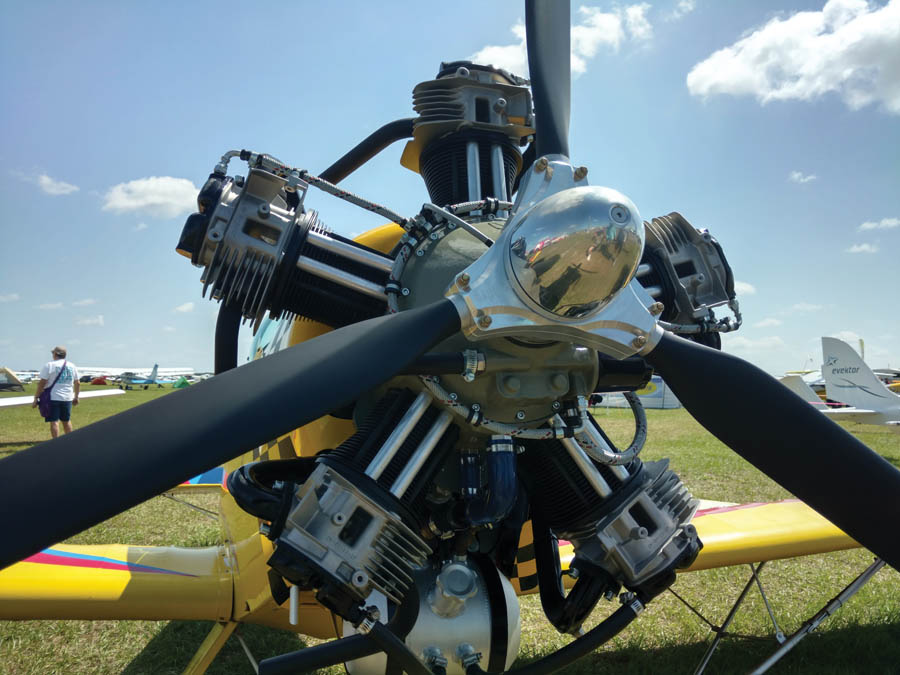

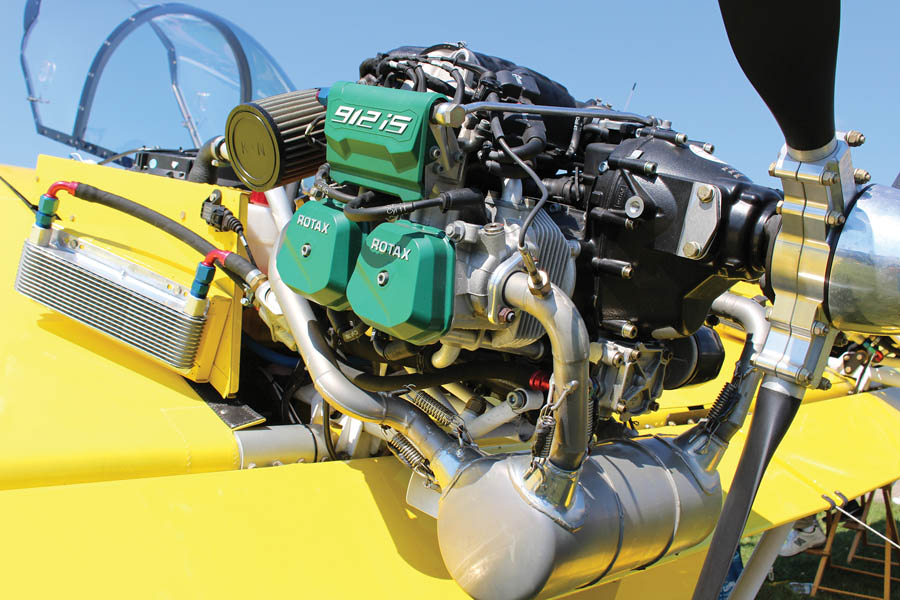
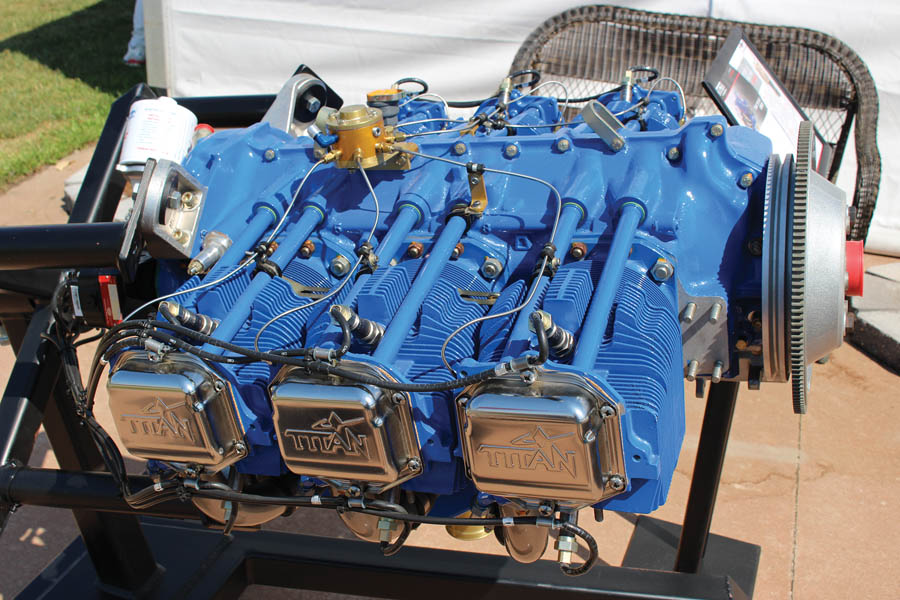
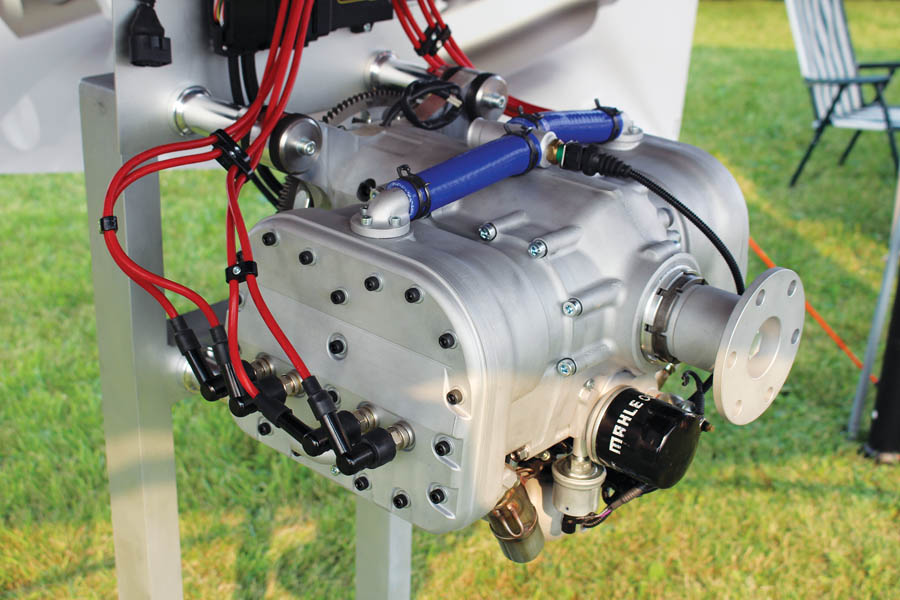

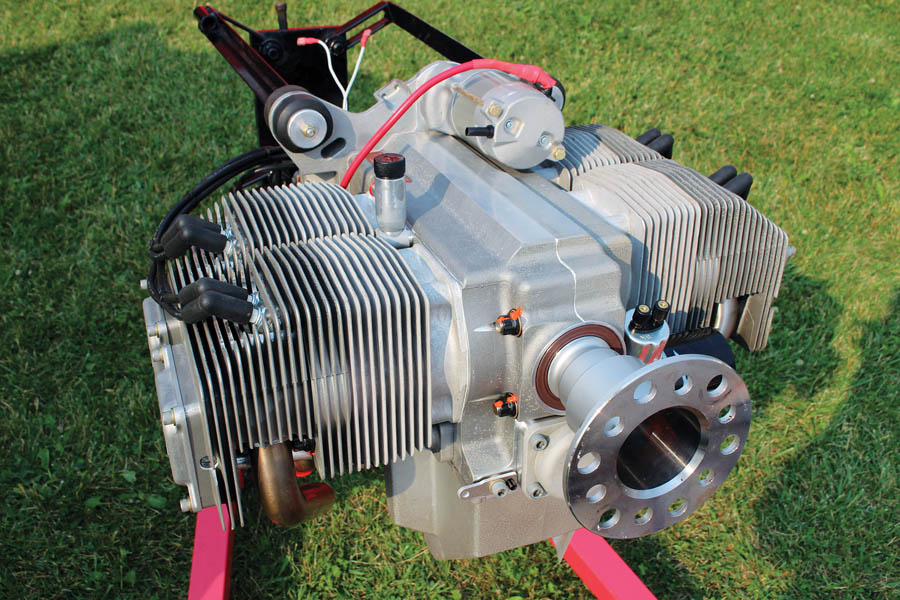
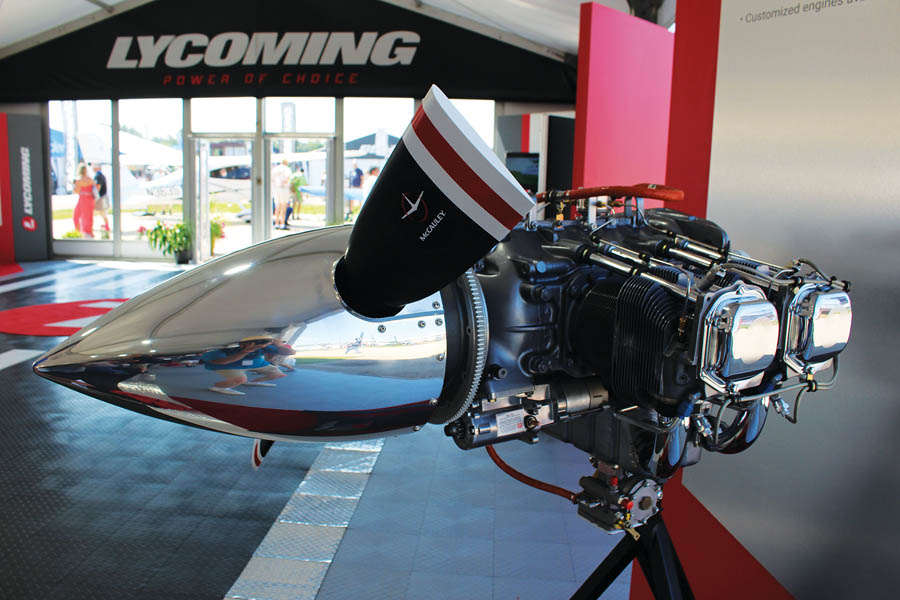
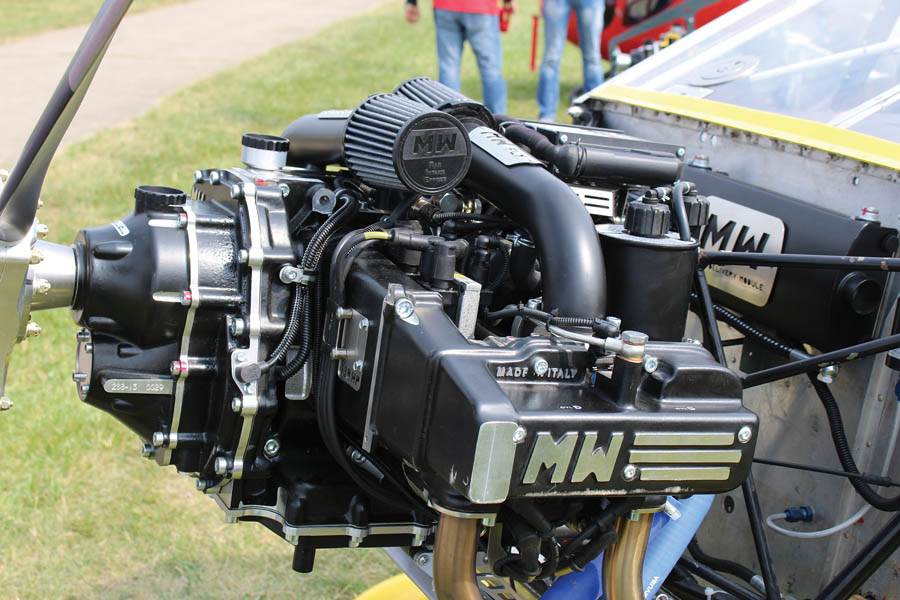
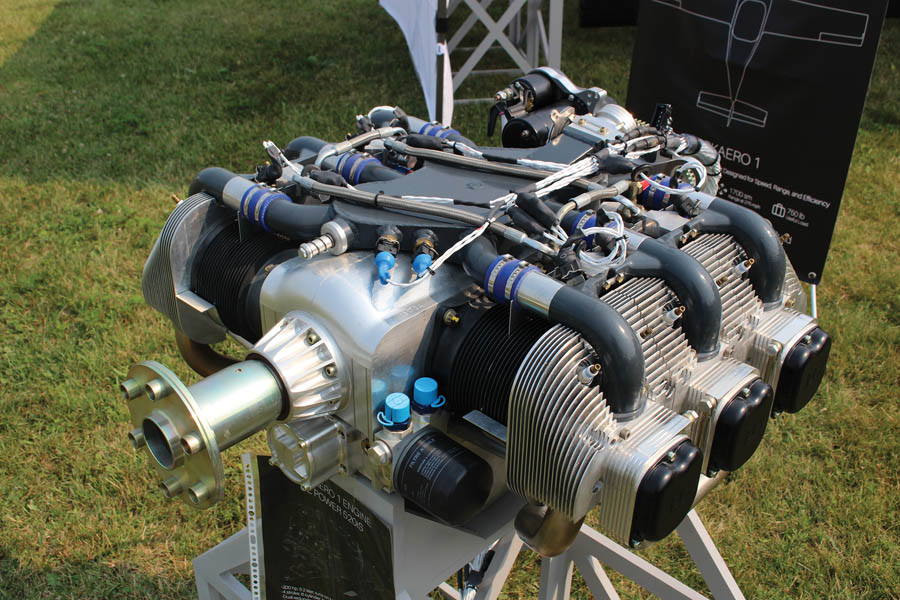
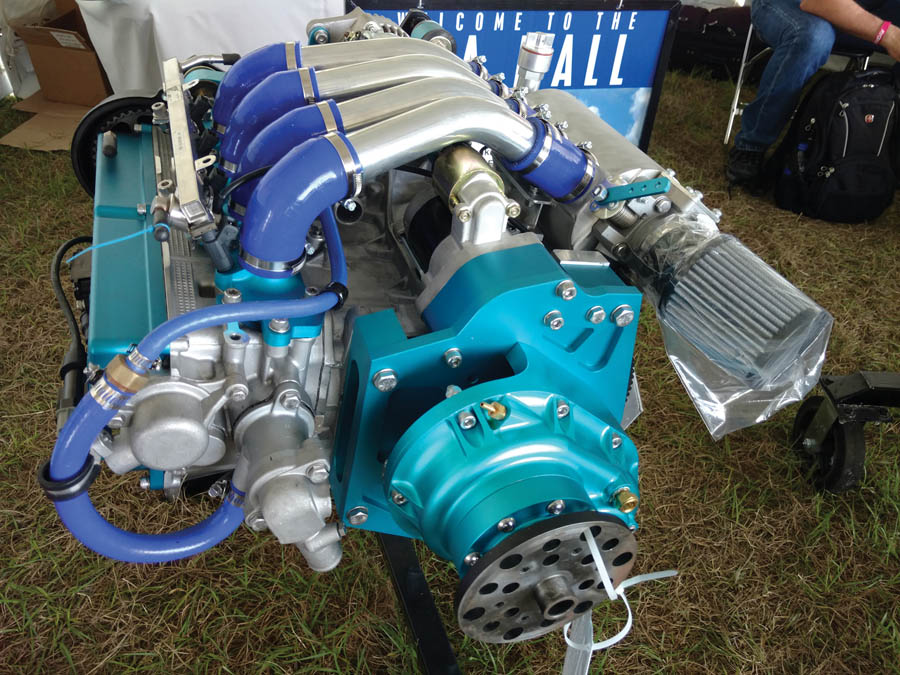
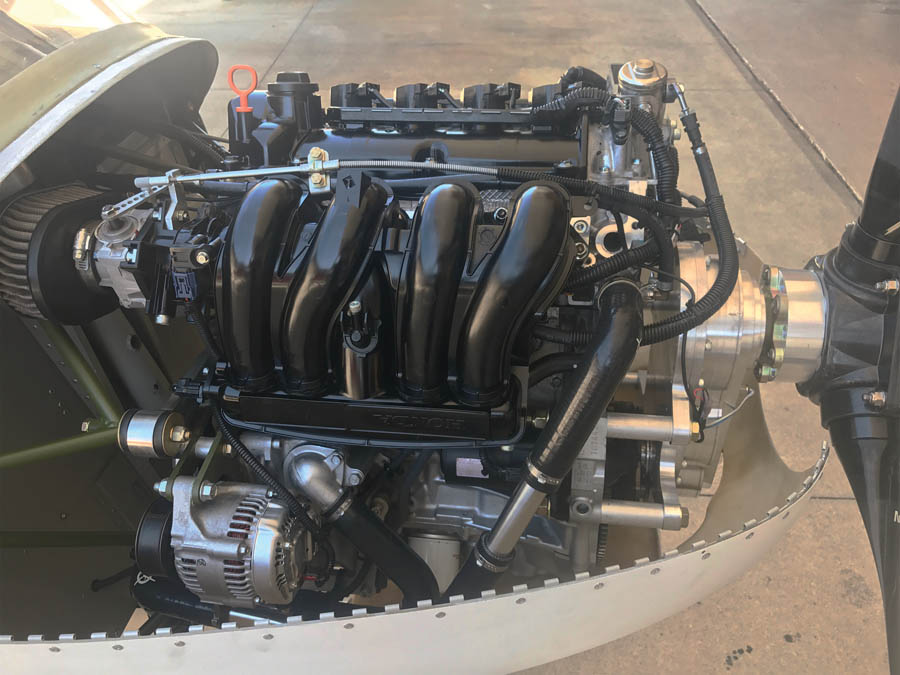

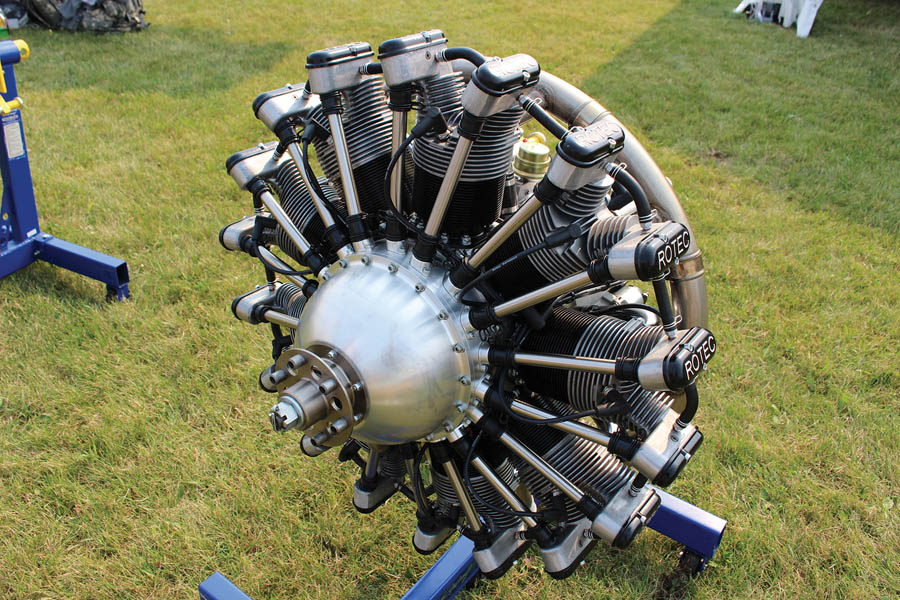
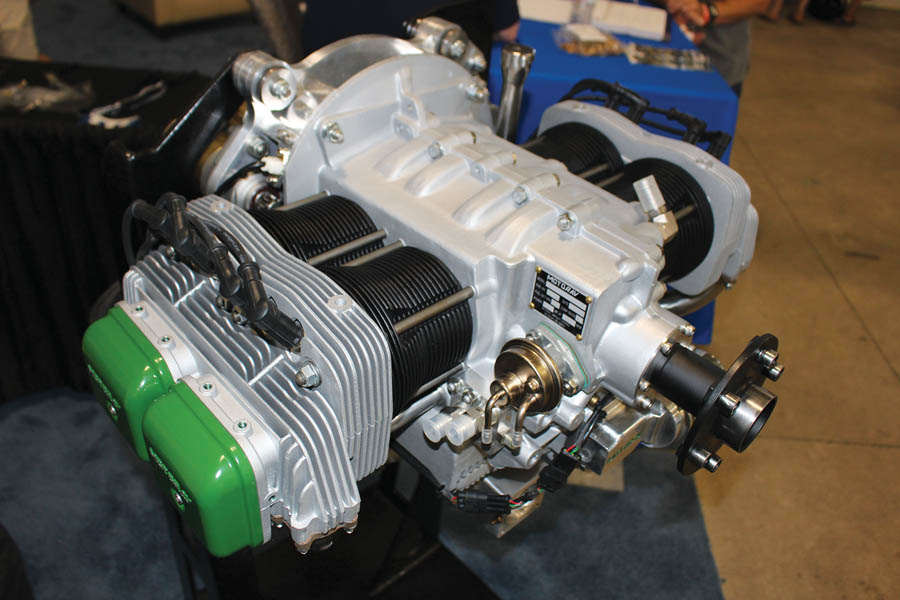

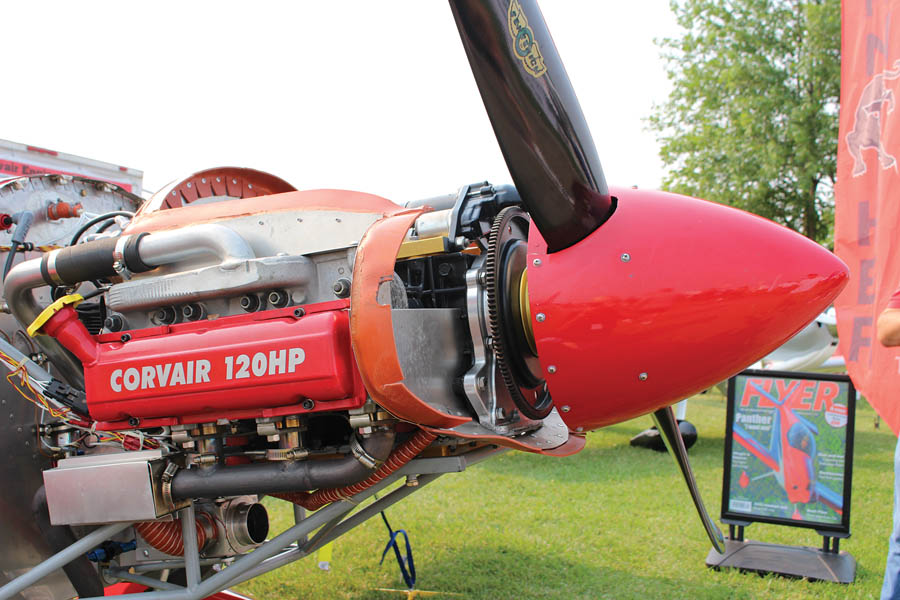
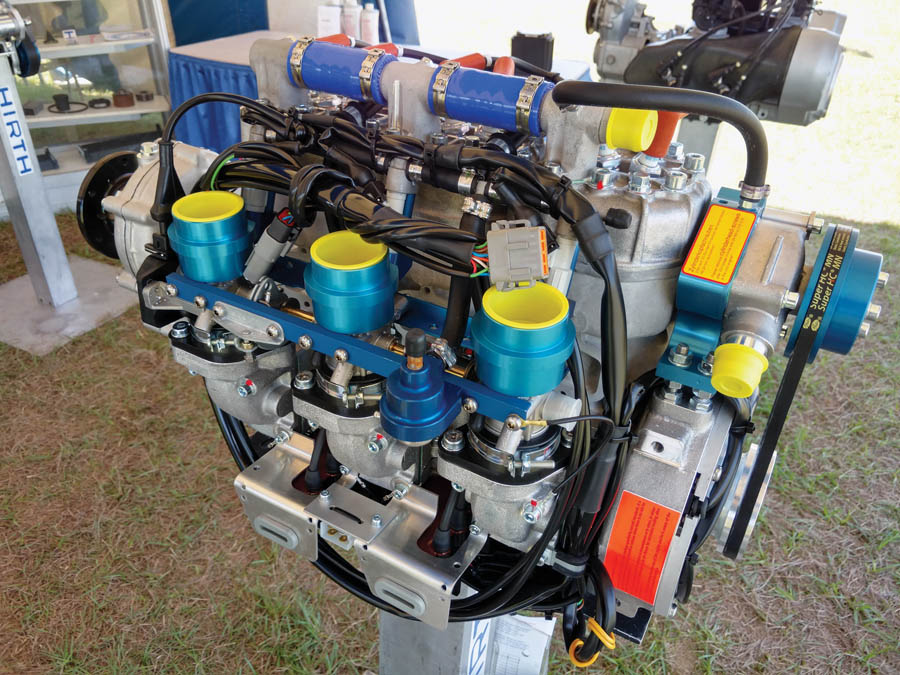




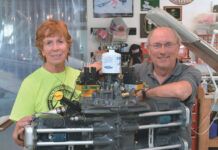
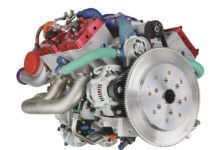
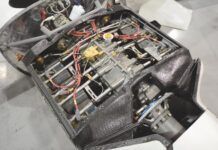
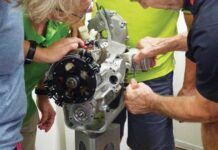

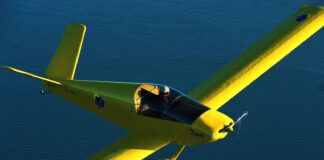
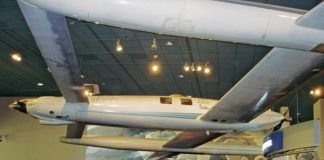
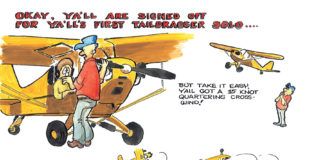

I realize this is an older article but you missed a great TDI engine called the P2M or PurePowerM out of Milan, Italy.
Their JPE01 comes in 150 hp, 160 hp and 170 hp models. At 100% power, the fuel burn is a very modest 5,6 and 7 gph respectively. At only 264 lbs wet and installed, it has very nice low weight to power. As a turbodiesel engine, it has incredible torque for slow flying. The price is nice at only €28,000 fully built and tested.
This also can be built as a fully functioning hybrid. It then adds 100 hp for the first 5 minutes of climb and recharges in about 15 minutes if I remember correctly.
Their larger 385 lb wet fully installed engine, called the JPE03, comes in either 250 hp or 300 hp models. The max fuel use at 100% power is 10 gph and 13.7 gph respectfully. The prices are €50,000 and €58,000 respectively.
These engines have a racing heritage. They are powerful and built to last beyond most engines. Currently they are only experimental but plan on becoming certified at some point.
Steve,
Thank you for your comment. I’ve been watching the P2M effort for some time, and I’m sure we’ll continue to keep an eye on it. May I ask if you are affiliated with the manufacturer, a distributor, or a potential dealer?
Dan Horton
I’m missing Polini Thor:
https://www.beliteaircraft.com/polini-thor-250-engine-review-the-best-ultralight-engine-weve-seen/
The Polini Thor is indeed a nice engine, but its output is somewhat less than the 50HP cutoff for inclusion in the Guide.
And there my friend is the problem. Everyone is catering for the higher end engine. What about the grass roots flyer?
It is extremely difficult to source an engine around 30 or 40 hp so we need magazines like yourself to help us find this information. It seems nobody is trying to keep the rag and tube fellows happy anymore.
You forgot about the McCulloch 4318A 0-100. These are an air cooled 4 cylinder boxer 2-stroke direct drive with 72hp @3400 rpm. They weigh around 80lbs. I have one on my Bensen BM80 (N521LW) and it has been a great reliable engine.
Will the 130 horse power viking vw aircraft engine work on the super petrel and do you install it and for how much?